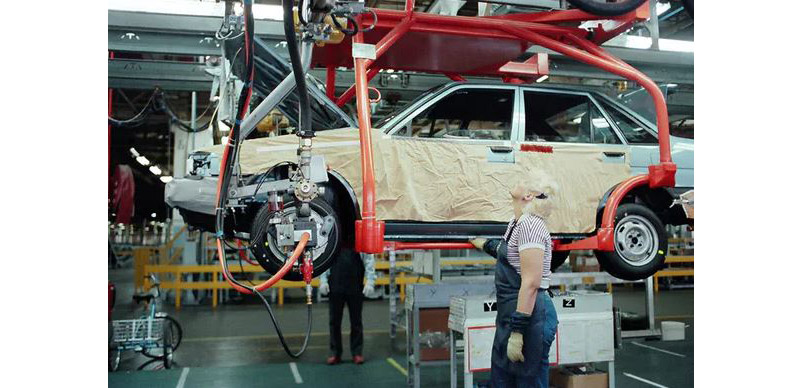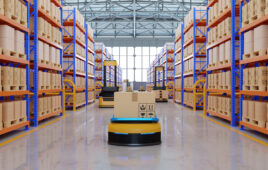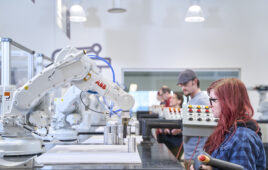It seems not a day goes by without the appearance of another dire warning about the future of work.
Some alarmists fear a “robot apocalypse,” while others foresee the day of “singularity” coming when artificial intelligence exceeds human intelligence. Still others warn that income inequality will continue to riseas owners of capital capture more of the benefits of innovations than those who labor for a living.
Yet there is also a counter-trend emerging: Groups as diverse as the World Economic Forum and the International Labor Organization are beginning to argue that it’s up to society to shape the future of work. What’s needed is action today to harness and channel technological changes, prepare the workforce for new demands and opportunities, strengthen their voices and built a new social contract that includes leaders in business, education, labor and government.
These are some of the issues we’ll be discussing in an online course that draws on some of the best experts in AI, robotics, economics and employment relations at MIT and around the world. Our main point is that avoiding apocalyptic outcomes requires bold actions and a collaborative approach.
How to shape change
Virtually every technological revolution has inspired workers to fear for their jobs. And for good reason.
Each one resulted in the creation of new jobs alongside the elimination of others. At the same time, new technologies changed the way work is done within most occupations.
But fighting technology-inspired changes, as the Luddites of the early 19th century did, rarely works – and can in fact have disastrous consequences. The Luddites, textile workers and weavers who feared the advent of automated looms in England, destroyed machines and burned factories, hoping to arrest their advance. The government eventually quashed the unrest, killing some workers and jailing many others.
The new technologies that transformed the textile industry continued unabated. While many weavers lost their jobs, it created new ones for mechanics and other industrial workers and increased overall productivity.
The important lesson from this episode is that the transition from an agricultural to an industrial economy occurred in the absence of updated policies to govern the transition, which led to more pain for those who were displaced than was necessary.
So as today’s workers in dozens of occupations face down the robot apocalypse, what’s needed aren’t more battle cries but concerted action by leaders in business, education, government and, of course, labor. And if, as predicted, AI and robotics do transform nearly half of jobs requiring new skill sets for workers, the current challenge may be greater than ever, making it even more important that we create a vision and a path forward that everyone can support.

Giving ‘wisdom to the machines’
Let’s start with business leaders since they buy and implement most new technologies.
The dominant business motivation for introducing new technology is to reduce human labor and the costs associated with it. Robots, or more broadly software, don’t leave for another job, go on strike or need bathroom breaks – let alone a paycheck or benefits.
But there is ample historical and current evidence that simply viewing technology as a labor cost saving tool leads to overinvestment and weak returns.
Just ask General Motors what it got for its nearly US$50 billion in robots in the 1980s in its futile effort to catch up with Toyota’s more efficient production and labor relations systems. The answer is not much.
Instead, GM eventually learned from Toyota via a joint venture that the highest return on investments came by integrating new technology with new work practices, which allowed workers to help “give wisdom to the machines.”
The key lesson for business is that it needs to engage workers in designing and deploying new technologies to get the greatest productivity gains.
Learning for life
Lifelong learning is the new buzz phrase when it comes to discussions of work. Transforming this from rhetoric to reality will require fundamental changes in educational institutions and teaching methods.
It starts with the children in schools today who will likely be most affected by the AI revolution in coming decades. And while in the past the focus was on the STEM disciplines – science, technology, engineering and math – industry leaders these days say they need tomorrow’s workforce to be filled with people who can think analytically and creatively, work well together in teams and can adapt readily to near-constant change.
In other words, workers need to be inculcated from an early age with more behavioral and analytic skills, such as teamwork, communications and problem-solving with data.
Even after people are in the workforce, learning new skills and acquiring new knowledge will continue throughout their careers. That means businesses and universities will need to form new partnerships that ensure the workforce can continue to adapt.
A new social contract
A key way government can contribute is by revisiting the legislative framework that supports labor.
The New Deal was a series of programs, projects and reforms that helped shift the U.S. from a primarily agricultural to industrial economy. It established collective bargaining rights, created Social Security and unemployment insurance, and set minimum wages and labor standards.
With the rise of the gig economy and the changing nature of the employer-employee relationship, a new social contract is necessary to support workers in this new reality. Benefits should be portable so workers can easily move from job to job without losing health insurance and other benefits now tied to a specific employer. Post-secondary education needs to be more affordable.
Labor law should make it easier so different kinds of workers, from professionals, to low wage workers, to independent contractors, can all have their voices heard. And safety nets need strengthening to support those displaced or whose career has been downgraded by all the seismic changes coming our way.
Workers need a seat
As for labor leaders, they need to make sure they’re at the table with business, education and government to ensure workers aren’t left behind by new technologies.
Training needs to be at the top of union bargaining agendas with business so that organized labor can be a champion of lifelong learning for workers. One important way is by building, expanding and modernizing apprenticeships.
In addition, they can’t just wait to be invited by companies to participate in discussions about implementing new tech. The union representing hotel workers is showing how to get engaged by actively negotiating new agreements with big casinos in Las Vegas and large chains like Marriott to ensure workers are heard in the process and are fairly compensated along the way.
The key point is that none of these groups can meet the coming challenges on its own. Just as we’ll be doing in our class in coming weeks, people from all walks of life and segments of society should be discussing these issues so everyone can participate in shaping the future of work.
Filed Under: AI • machine learning, Product design, Robotics • robotic grippers • end effectors




